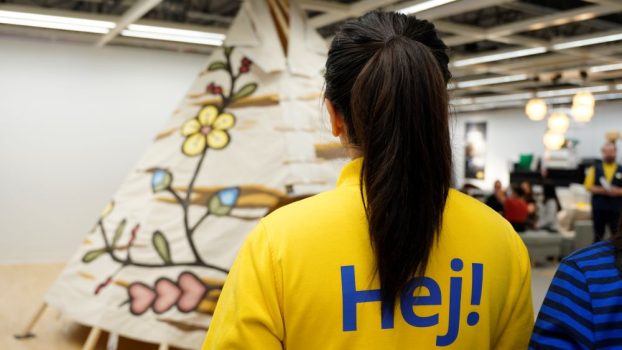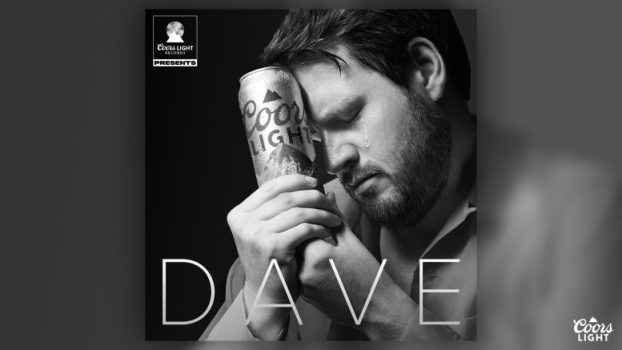 This is part of this year’s Next Big Thing series, tracking the latest technological developments set to be a bigger part of marketers’ lives. Check out what’s new and emerging in other areas here.
This is part of this year’s Next Big Thing series, tracking the latest technological developments set to be a bigger part of marketers’ lives. Check out what’s new and emerging in other areas here.
This story originally appeared in the October 2019 issue of strategy.
Last summer, HomeEquity Bank reintroduced its brand to older Canadians with a humorous and emotive campaign that focused on its bread-and-butter: reverse home mortgages. The creative, by Zulu Alpha Kilo, marked a significant departure for the 30-year-old company, whose marketing had long been product-driven.
Later, HomeEquity partnered with Toronto-based neuromarketing firm Brainsights to test 300 participants’ unconscious reactions to its creative, measuring viewers’ brainwaves while exposing them to content, including old and recent HomeEquity ads and six new prototype spots. It wanted to avoid the “group think” that can occur during traditional focus groups, and prevent respondents from saying what they thought the brand wanted to hear, says Yvonne Ziomecki, CMO and EVP of marketing and sales.
The test revealed that one of the campaign’s commercials (a direct-response ad) could perform much better if it reduced the amount of emotional messaging, repeated the company’s phone number, and reinforced the value proposition midway through the spot by using checkmarks to highlight key points. Based on those insights, the brand hit reset on the ad and launched a new one with Zulu this summer.
When neuromarketing (also known as consumer neuroscience) was introduced in the early 2000s with the goal of opening a window into consumers’ minds, skeptics were quick to point out the field’s perceived pitfalls: exorbitant fees, smaller-than-average sample sizes and delays inherent to science-based (and equipment-heavy) approaches to market research. But developments in automation, machine learning and AI, as well as in the science of the brain itself, are poised to help neuromarketing become a more accessible and efficient option for brands.  In 2017, a survey by the Association of National Advertisers (ANA) in the U.S. looked into marketers’ awareness and perception of the discipline. Of the 187 marketers surveyed, the majority expected to see it either complement (64%) or replace (30%) more traditional forms of market research. More importantly, while only 10% of respondents linked their use of the science to specific business outcomes, they did report an average increase of 16% in revenue.
In 2017, a survey by the Association of National Advertisers (ANA) in the U.S. looked into marketers’ awareness and perception of the discipline. Of the 187 marketers surveyed, the majority expected to see it either complement (64%) or replace (30%) more traditional forms of market research. More importantly, while only 10% of respondents linked their use of the science to specific business outcomes, they did report an average increase of 16% in revenue.
As Carl Marci, then-chief neuroscientist and EVP at Nielsen Consumer Neuroscience, noted in the report, some CPG companies have moved from “occasional” to “everyday” use of neuromarketing – with one multinational reporting it now tests 80% of its ads this way. What’s more, neuroscience has begun to move beyond the realm of CPG and into other categories, such as financial services, media, tech and non-profits, according to Marci.
Kevin Keane, co-founder and CEO of Brainsights, notes that replicability of results has had an impact on marketers’ perception of neuromarketing over the last couple of years. As studies from different researchers around the world begin to point at similar results – a critical evolution in any science-based discipline – clients are beginning to feel more confident in its capabilities, he says.
“It encourages the industry forward in saying, ‘We’ve all found the same things and now we can start competing in different ways,’” Keane says. “It’s not the Wild West anymore; it’s not just a bunch of cowboys saying, ‘This is the buy button in the brain.’”
Brand marketing studies at True Impact, another Toronto-based neuromarketing agency founded by Diana Lucaci in 2012, were previously conducted with the help of academic or institutional partners, such as hospitals, and would take weeks or months. Today, that same research can be completed in a matter of hours, thanks in part to advancements that enable companies to glean data much quicker, says Lucaci.
“The analysis, the processing, the interpretation – all of that stuff has been condensed now,” Lucaci says. “It doesn’t take that long to analyze data coming from a high-grade EEG headset like it used to in the past.”
Lucaci says the only thing that hasn’t been automated is the interpretation of that data into actionable insights. “You still need a person with expertise in multiple industries to connect the dots and to translate it for them in a way they can understand it,” she says. But, in the future, recommendations could one day be automated. “We’re moving from being reactive to being intentional, then using AI to solve those challenges that marketers have.”
In July, Brainsights began rolling out Express Brainsights, a “self-serve video neuralizer,” which Keane says allows clients to go to its website, select their audience and screen size, upload any piece of video content, and receive brain data about it, as well as a performance analysis report – all within five days. And with fees starting at $5,000, it’s cheaper than traditional neuro-based research services, he says. Soon, the company will be adding a cross-screen solution and branded content analysis to the mix.
Having scanned thousands of brains to date, Brainsights now has access to vast amounts of data – its EEG headsets record up to a dozen brainwaves every two milliseconds during a single brain scan – which it hopes to one day leverage through machine learning, he says.
In the future, AI-powered image recognition technology could be used to read and understand video content down to the individual frame, making it possible to seamlessly run that content against previously recorded neurological data – without needing to scan a single brain, says Keane. That would not only speed up the analysis process, but could help further bring down costs. 
Already, developments in the field have enabled some agencies and brands to apply neuromarketing in new ways. For example, Nish Shah, VP of strategy at Initiative, says the agency worked with Brainsights to better understand video effectiveness.
Shah believed brand familiarity played a role in building brand relevance – a hypothesis it was able to prove out using neuro-based research. That work has enabled it to develop a “video content formula” for driving greater brand relevance in campaigns. According to Shah, viewers find long commercials more relevant after they are exposed to two shorter spots. “We could simulate brand familiarity at a campaign level just by changing the way we sequence ads and see this pretty drastic change.”
The agency has now begun to leverage that formula to help drive brand relevance with clients such as beer brand Carlsberg. “They’ve got a longer story to tell and they don’t just want to run six-second ads,” says Noah Vardon, VP at Initiative. Introducing video sequencing, he says, has led to a 30% to 35% bump in watch time for Carlsberg’s long-form videos.
While there have been advancements, barriers to widespread adoption remain. The ANA study, for example, found that only 14% of marketers have used EEG, while eye tracking (another method used in neuromarketing) was the most widely used at only 36%. And for EEG, 20% of marketers considered it to be a “very valid and reliable” form of research.
Adam Spadaro, marketing insights lead at Shopify, has a PhD in cognitive psychology and has dabbled in neuromarketing, behavioural economics and traditional market research, having previously worked as a director of behavioural insights and measurement at agency John St.
He agrees that there’s been a growing interest in neuromarketing and adjacent fields – including behavioural science – as some major research firms begin to launch these sub-disciplines within their own companies. Deloitte Canada is in the midst of launching an Emotional Experience Index to help evaluate user experience using neuroscience; Nielsen now has 16 neuro labs globally (though not in Canada); and some clients, such as P&G, have reportedly begun bringing neuroscientists in-house.
But Spadaro notes that other forms of market research can uncover similar insights through controlled experiments.
“[There are] a lot more simple, less sexy ways of doing it that are a lot more cost-effective… Whether you are experimenting on a website, app [or] social media channel, the insights gathered from research are being evaluated based on their ability to yield significant increases in some marketing metric,” Spadaro says. That is why his focus at Shopify has been to “run controlled experiments where we can manipulate our marketing materials or manipulate who gets exposed to certain ads or content on our site, to measure the effects on our performance marketing and on our brand.”
Over the next three-to-five years, Lucaci says True Impact will focus on becoming more of a neuromarketing SaaS (software-as-a-service) player, as it builds on its predictive model, scanning brains less frequently as a result.
As for Brainsights, Keane says the business was once very project-focused, but it’s increasingly moving towards products (such as Express Brainsights), platforms and partnerships with advertisers and media shops. “We’re working with [agencies] to effectively create a neuro-layer to the data stack that they’ll be bringing to their clients,” he says.























